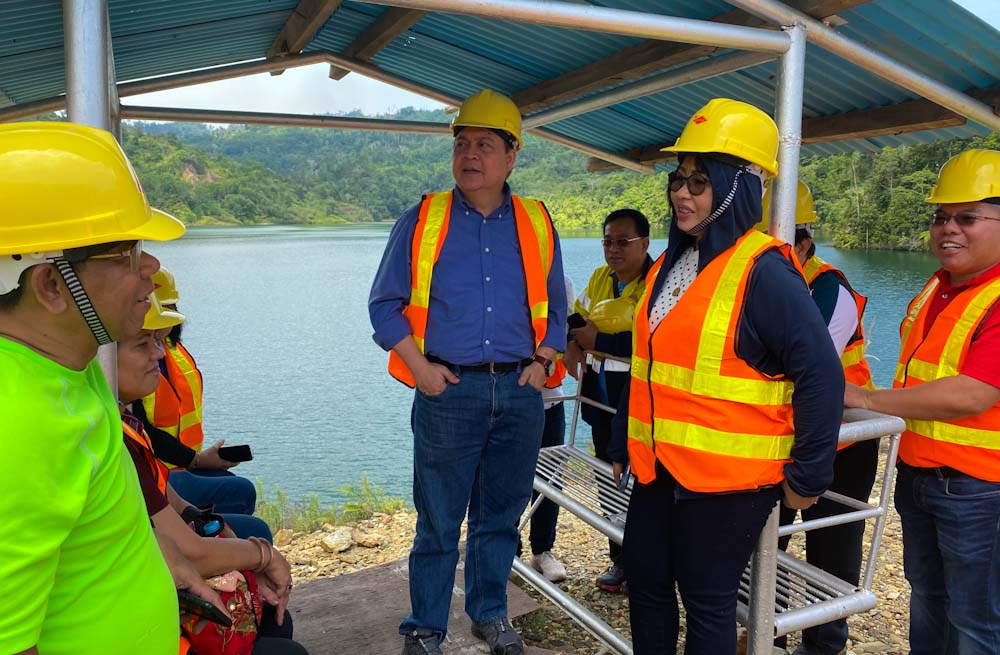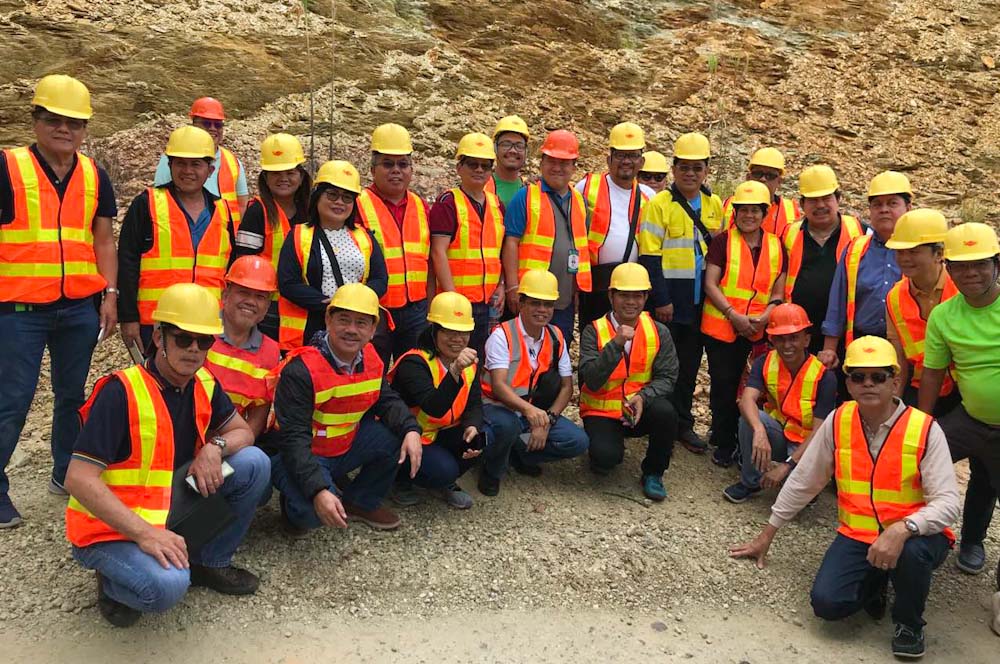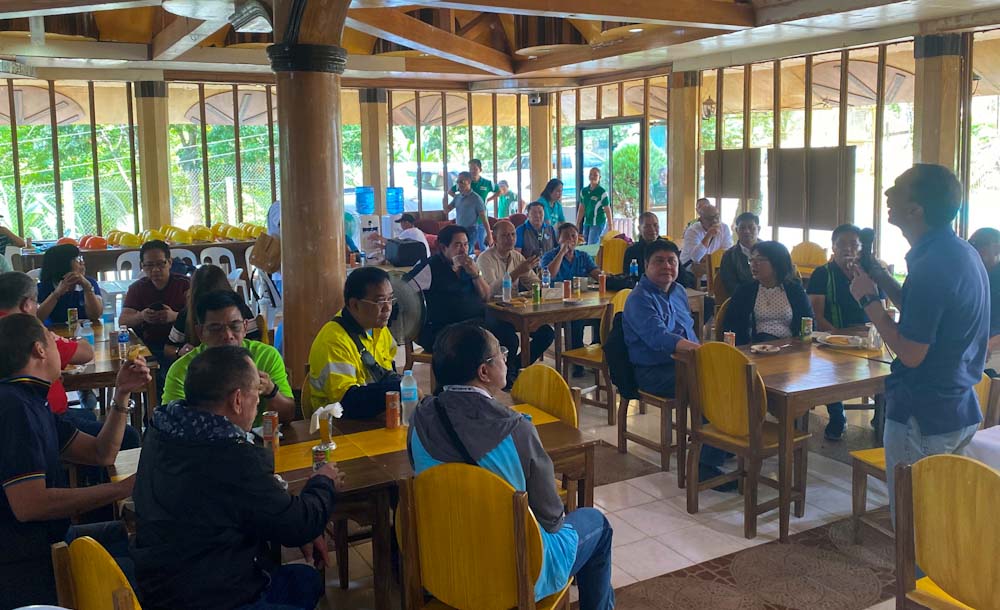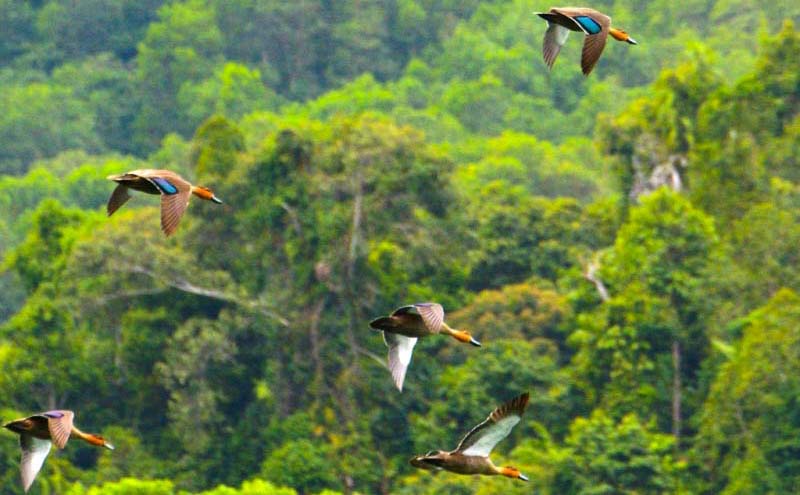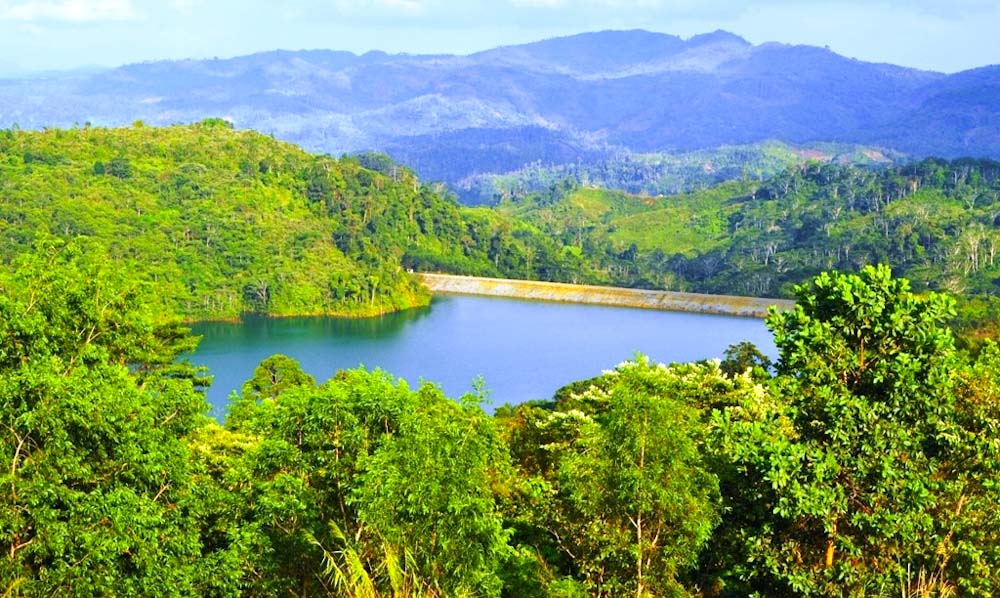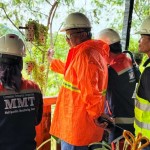-
The Chief: MGB Director Wilfredo G. Moncano (center), DENR Assistant Secretary Nonita S. Caguioa and other MGB officials discuss TVIRD's final mine rehabilitation during the agency’s observation tour at the company’s Canatuan Project in Siocon Municipality. In the background is TVIRD’s Sulphide Tailings Impoundment Facility, which now serves as a habitat for various species.
-
The visiting DENR and MGB officials led by Director Wilfredo G. Moncano and ASEC Nonita S. Caguioa are joined by TVIRD officials at the company’s mine site in Canatuan, Siocon Municipality. Some 15 MGB regional directors and central office division chiefs joined the delegation.
-
Operations VP Jake Foronda led the opening ceremony and presentation of TVIRD’s final rehabilitation activities. Regional directors are sharing the Canatuan experience in their respective areas as a benchmark for best practices
-
Wild ducks (Anas Luzonica) are permanent residents in TVIRD’s Tailings’ Storage Facility, which is also presently a habitat for hawks, eagles, squirrels, bats and a variety of snakes, including the Philippine Cobra (Naja Philippinensis).
-
Big trees now surround the company’s TSF or Tailings Storage Facility. Year in and year out, ducks are constntly visible during early mornings. Aside from wild ducks, snakes and different kinds of bats and birds reside at the forested area above the lake.
TVIRD Final Rehabilitation activities enjoin regulators to monitor its success
Siocon, Zamboanga del Norte / June 2020 – Top officials of the Mines and Geosciences Bureau (MGB) and the Department of Environment and Natural Resources (DENR) recently visited TVI Resource Development Philippines Inc. (TVIRD) at its mine site at Sitio Canatuan, Siocon Municipality of this province to observe the implementation of the company’s Final Mine Rehabilitation and Decommissioning Plan (FMRDP).
For the first time in the agency’s history, government regulators of the country’s entire extractives sector visited Canatuan in “full force” as the company implements the agency-approved FMRDP, which is reported to have accomplished 94 percent completion. The delegation included 15 MGB regional directors and central office division chiefs who were led by MGB Director Wilfredo G. Moncano and DENR Assistant Secretary for Finance, Special Concerns and Mining Nonita S. Caguioa.
As the first company to operate under the country’s Mining Act of 1995, TVIRD is also the first company to conclude its Gold-Silver / Copper-Zinc projects and implement its mine closure program, in accordance with the same law.
At the height of its operations, the company was recognized by both local and international award-giving bodies for adhering to the highest health and safety standards as well as its holistic approach to environmental management.
These recognitions include the Most Outstanding Employer from the Department of Labor and Employment (DOLE), Rotary Club and the ZAMPEN Tripartite Industrial Peace Council as well as Gawad Kaligtasan from the DOLE in 2012. It was likewise conferred the Safest Mining Operations Award by the Philippine Mine Safety and Environment Association (PMSEA) for three successive years until 2013, during which it was also conferred two Platinum Awards and two Titanium Awards under the Surface Mining category.
“Impressive work”
The visiting government officials were visibly impressed, according to TVIRD Operations Vice President Jake Foronda, who led the visit. Regulators were toured in areas targeted for rehabilitation and witnessed Mt. Canatuan already teeming with life – different species of trees, cash crops and even wildlife.
“I recall RD Roland de Jesus of MGB Region IV-B requested a copy of our presentation to showcase TVIRD’s experience in his region. Meantime, other regional directors are sharing the Canatuan experience in their respective areas as a benchmark for best practices,” Foronda added.
Teeming with life
In her opening presentation, TVIRD Chief Environmental Specialist Kyrstell Banaag explained that the company has planted and grown over 411,000 trees in 167 hectares within and around the company’s Mineral Production Sharing Agreement (MPSA) area that were “disturbed” during mining operations.
“These areas are now the subject of final mine rehabilitation,” Banaag said. These also include some 28 hectares occupied by the Sulphide Tailings Storage Facility (Sulphide Dam) and the rich foliage that surrounds it – which now resembles a lake and is presently a habitat for wild ducks (Anas Luzonica), hawks, eagles, squirrels, bats and a variety of snakes, including the Philippine Cobra (Naja Philippinensis).
Other major rehabilitation areas include the overburden waste storage area, surface mine (former mine pit), internal road network, mill plant area and the company’s housing and office facility.
Sustainable livelihood
During its operations, TVIRD reached peak employment of over 1,200 and was ranked among the biggest private sector job generators in Zamboanga del Norte. It likewise provided jobs and royalties to its indigenous Subanon hosts with whom it shares a common path towards mutual progress.
In line with transitioning the local economy from mining back to agriculture, Banaag identified about 30,000 rubber trees and 2,000 coffee plants that are now being grown in almost all rehabilitated areas within TVIRD’s MPSA.
“Some of these rubber trees are already ‘tappable’ (harvestable) while a lot of coffee plants are already bearing fruit. These would be one of the Subanen tribe’s sources of income once their land is finally turned-over back to them,” Banaag said.
The inclusion of these cash crops was suggested by the Subanon community in a series of public consultations conducted by the company prior to decommissioning. To date, the tribe has planted about 96,304 rubber trees within their ancestral lands – enjoying income from trees they planted as early as 2005.
Monitoring bodies
A Multi-Partite Monitoring Team designated by the Mine Rehabilitation Fund Committee (MRFC) oversees TVIRD’s implementation of its final rehabilitation. It is chaired by an MGB representative and is composed of representatives from the Environmental Management Bureau, Department of Health, local government units and the Subanon tribe.
Quarterly accomplishments are reported to the MRFC, which is chaired by the MGB regional director while members come from the regional office of the DENR, EMB, the Subanen tribe, host town, province and an NGO. The MRFC is also monitored by the Contingent, Liability, and Rehabilitation Fund – Steering Committee, which also evaluates the company’s Environmental Protection and Enhancement Program and FMRDP.
*******

